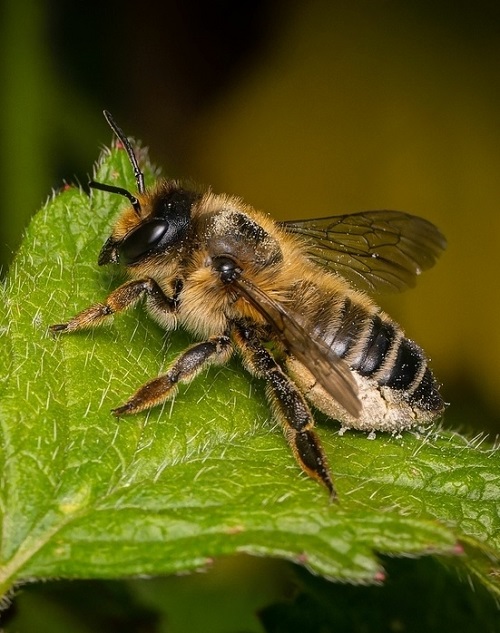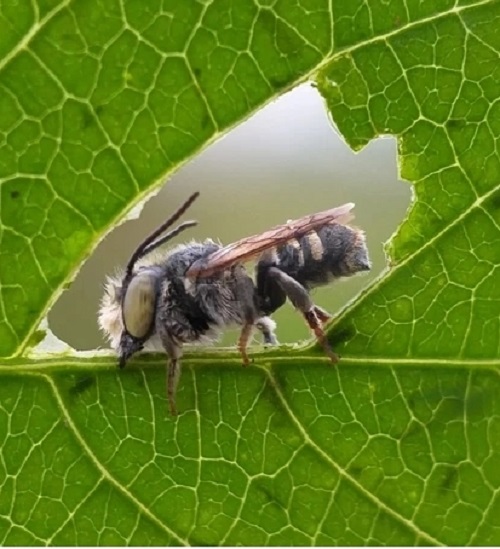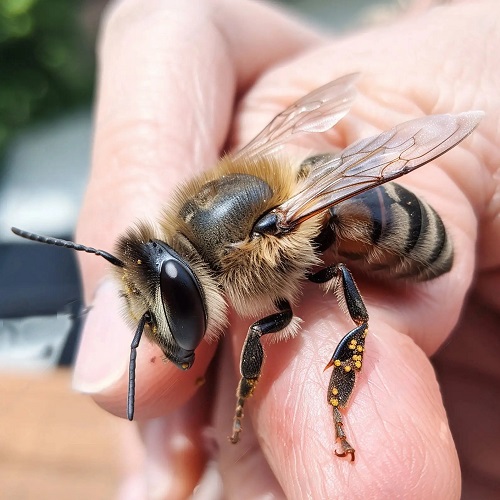Leafcutter Bees: Are They Good or Bad? Do Leafcutter Bees Sting? If you have these questions then we have the answers!
Among the various types of bees, Leafcutter Bees have garnered attention due to their unique behavior and distinctive nesting habits. So, Do Leafcutter Bees Sting? Are they good or bad? Time to find out!
Read about 46 Best Plants that Attract Bees here
Leafcutter Bees Information
Leafcutter Bees are solitary bees that belong to the family Megachilidae. They are commonly found in North America and are known for their ability to cut neat, circular sections of leaves that they use to line their nest cavities.
Unlike honeybees and bumblebees, leafcutter bees do not form large colonies but instead prefer to nest individually. They create nests in existing cavities, such as hollow plant stems or abandoned burrows, using the leaf pieces they collect.
Read about Praying Mantis Facts + What Do Praying Mantis Eat here
Are Leafcutter Bees Good or Bad?
Leafcutter Bees can be considered both good and bad, depending on the context and perspective. Here are some points to consider:
- Pollinators: They are excellent pollinators and actively visit flowers to collect pollen and nectar, aiding in the pollination process. Their activity helps facilitate the reproduction and production of fruits and seeds in various plant species, contributing to ecosystem health and biodiversity.
- Efficient Pollination: Unlike some other bees, they have specialized behaviors, such as cutting precise pieces of leaves to build their nests. This behavior inadvertently leads to the transfer of pollen, promoting effective pollination and fruit production.
- Leaf Damage: As their name suggests, they cut small, round pieces of leaves to construct their nests. While this behavior may not significantly harm most plants, it can cause cosmetic damage to the foliage, particularly in ornamental plants or in situations where there is a high population density of leafcutter bees. However, it’s important to note that the damage is usually minimal and doesn’t typically pose a significant threat to the overall health of the plant.
- Nesting Behavior: They build their nests in pre-existing holes or cavities, such as in dead wood or hollow stems. While this nesting behavior may not be detrimental in natural settings, it can occasionally be problematic when they utilize man-made structures or materials, such as drilling holes in wooden structures or nesting in irrigation equipment.
Read about Praying Mantis Egg Sac Information and Details here
Do Leafcutter Bees Sting?
Leafcutter Bees are known for their non-aggressive nature and possess a mild sting that they use only when provoked or handled. Compared to other stinging insects like honeybees or yellowjacket wasps, their sting is notably mild and causes considerably less pain.




